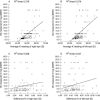Incidence and severity of keratoconus in Asir province, Saudi Arabia
- PMID: 16234439
- PMCID: PMC1772915
- DOI: 10.1136/bjo.2005.074955
Incidence and severity of keratoconus in Asir province, Saudi Arabia
Erratum in
- Br J Ophthalmol. 2006 Aug;90(8):1071
Abstract
Aim: To assess the incidence and associated signs and symptoms of patients with keratoconus in Asir Province, Saudi Arabia.
Methods: 125 new keratoconus patients (51 male, 74 female; mean age 18.5 (SD 3.8) years; range 8--28 years) were recruited from referrals to the department of ophthalmology, Asir Central Hospital, over a 1 year period. Age, visual acuity, and keratometry were recorded along with clinical signs and symptoms.
Results: The incidence of keratoconus in Asir Province is 20 cases per 100,000 population. Also, the disease severity is high, as indicated by an early mean age (17.7 (3.6) years) with advanced stage keratoconus. Visual acuity, with either spectacles or rigid contact lenses, was 6/12 or better in 98% of eyes measured. Just over half (56%) of patients had atopic ocular disease. 16% of patients had a positive family history of the disease and 16% had atopic dermatitis (eczema and/or vitiligo).
Conclusion: The incidence and severity of keratoconus in Asir Province, Saudi Arabia, is high with an early onset and more rapid progress to the severe disease stage at a young age. This might reflect the influence of genetic and/or environmental factor(s) in the aetiology of keratoconus.
Figures




References
-
- Zadnik K, Steger-May K, Fink B, et al. Between-eye asymmetry in keratoconus. Cornea 2002;2:671–9. - PubMed
-
- Bennett ES. Keratoconus. In: Bennett ES, Grohe RM, eds. Rigid gas permeable contact lenses. New York: Professional Press, 1986:296–344.
-
- Zadnik K. Keratoconus. In: Bennett ES, Weissman BA, eds. Clinical contact lens practice. Philadelphia: JB Lippincott, 1991;45:1–10.
-
- Kennedy RH, Bourne WM, Dyer JA. A 48 year clinical and epidemiological study of keratoconus. Am J Ophthalmol 1986;101:267–73. - PubMed
-
- Ihalainen A. Clinical and epidemiological features of keratoconus: genetic and external factors in the pathogenesis of the disease. Acta Ophthalmol 1986;178 (suppl) :5–64. - PubMed
Publication types
MeSH terms
LinkOut - more resources
Full Text Sources
Medical
